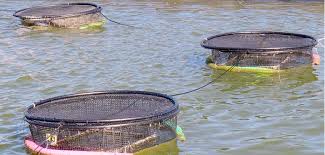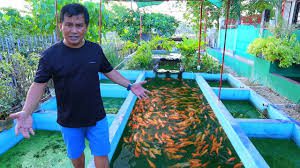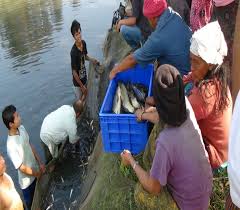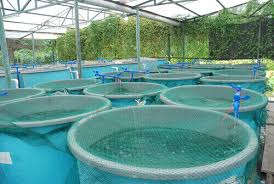Pond culture is a widely practiced method in aquaculture that involves the rearing of fish in controlled freshwater environments. This approach utilizes artificial or natural ponds to cultivate various fish species, making it a significant aspect of sustainable aquaculture practices worldwide. The key to successful pond culture lies in creating a balanced ecosystem that supports fish health and growth.
The method of pond culture has its roots in ancient practices, where communities relied on ponds as a resource for food and income. Today, it has evolved into a sophisticated technique, incorporating modern technology and management practices. It allows fish farmers to optimize production while minimizing environmental impact. This method can be adapted to suit different geographical areas and climates, making it accessible to farmers worldwide.
One of the primary advantages of pond culture is its ability to provide a controlled environment. By managing factors such as water quality, temperature, and food supply, farmers can create ideal conditions for fish growth. This level of control also helps in preventing diseases and parasites, which can significantly affect fish health and production. Regular monitoring of water parameters, such as pH, dissolved oxygen, and ammonia levels, is essential to ensure a healthy environment for the fish.
Pond culture systems can be categorized into different types based on management practices and fish species. Extensive pond culture relies on natural food sources and requires minimal input, making it cost-effective for small-scale farmers. In contrast, intensive pond culture involves the use of artificial feeds and advanced management techniques to maximize production. This method often requires higher investment and technical knowledge but can yield significantly higher returns.
The choice of fish species for pond culture is also critical. Common species include tilapia, catfish, and carp, each with specific requirements for growth and survival. Farmers must consider the compatibility of species, as some fish may compete for resources or prey on others. Additionally, understanding the market demand for different fish species can guide farmers in selecting the most profitable options for their ponds.
Water management plays a crucial role in the success of pond culture fisheries. Proper water circulation and aeration are necessary to maintain dissolved oxygen levels, which are vital for fish respiration. Farmers often use aerators or fountains to enhance water quality and promote healthy fish growth. Additionally, regular water exchanges or filtration systems can help manage waste and maintain optimal conditions.
Incorporating sustainable practices in pond culture is essential for long-term viability. Techniques such as integrated aquaculture, where fish farming is combined with crops or livestock, can enhance productivity and reduce waste. Moreover, educating farmers about the ecological impacts of pond culture can lead to better management practices, ensuring that the natural environment is preserved while meeting the growing demand for fish.
Advantages of Pond Culture Fisheries
1. Controlled Environment: Pond culture allows for a controlled environment, which helps optimize growth conditions for fish. Factors such as water quality, temperature, and feeding can be managed effectively.
2. Cost-Effective: Compared to other aquaculture systems, pond culture can be more economical. Initial setup costs are often lower, and natural resources can be utilized efficiently.
3. Biodiversity Support: Pond systems can support a variety of species, promoting biodiversity. This diversification can improve ecosystem health and stability.
4. Reduced Risk of Disease: The controlled environment helps minimize disease outbreaks, reducing the need for antibiotics and chemicals. Healthy fish are more resilient and grow faster.
5. Sustainability: Pond culture fisheries can be sustainable when managed properly. Practices such as integrated aquaculture and natural feeding can enhance productivity while preserving the environment.
Types of Fish Suitable for Pond Culture
1. Catfish: Species like channel catfish and blue catfish are popular choices due to their fast growth rates and adaptability to pond environments.
2. Tilapia: Known for their hardiness and ability to thrive in various conditions, tilapia are highly suitable for pond culture. They are also omnivorous, making them easy to feed.
3. Carp: Common carp and grass carp are often raised in ponds. They are hardy and can utilize natural food sources, reducing feeding costs.
4. Trout: In cooler climates, trout species like rainbow and brook trout can be raised in ponds. They require well-oxygenated water and cooler temperatures for optimal growth.
5. Bass: Largemouth bass is a popular sport fish that can be raised in ponds. They thrive in well-managed ecosystems and can help control populations of smaller fish.
Pond Design and Construction

1. Site Selection: Choosing an appropriate site is crucial. Look for locations with good drainage, sunlight exposure, and access to water sources. The site should also be away from pollution sources.
2. Pond Size and Depth: Determine the size based on the intended fish species and stocking density. Generally, a depth of 3 to 6 feet is recommended to provide adequate space for fish and prevent overheating.
3. Water Source: Ensure a reliable water source, such as a stream, well, or rainfall. The water should be clean and free from contaminants to support fish health.
4. Aeration Systems: Incorporate aeration systems, such as diffusers or fountains, to maintain oxygen levels in the water. This is essential for fish growth and preventing stress.
5. Management Structures: Design features such as spawning areas, feeding stations, and shade structures to enhance fish production. These elements help create a balanced ecosystem and improve fish health.
Water Quality Management in Pond Culture
1. Importance of Water Quality: Maintaining high water quality is crucial for the health and growth of fish. Poor water quality can lead to stress, disease, and reduced growth rates.
2. Key Parameters to Monitor: Regularly monitor water parameters such as pH, dissolved oxygen, ammonia, nitrite, and temperature. Optimal ranges for these parameters vary by species but are generally as follows:
i. pH: 6.5 to 9.0
ii. Dissolved Oxygen: Above 5 mg/L
iii. Ammonia: Below 0.5 mg/L
iv. Nitrite: Below 0.5 mg/L
3. Management Practices: Implement practices such as aeration, regular water changes, and the use of biofilters to maintain water quality. Planting aquatic vegetation can also help improve water quality by absorbing excess nutrients.
Read Also: A Guide to Growing and Caring for Cortaderia Grass (Cortaderia Selloana)
Feeding Strategies for Fish in Ponds

1. Balanced Diet: Providing a balanced diet tailored to the nutritional needs of the fish species is essential. This includes protein, fats, carbohydrates, vitamins, and minerals.
2. Feeding Frequency: Feed fish several times a day, depending on their growth stage and species. Young fish may require more frequent feeding, while adults can be fed less often.
3. Monitoring Feeding Behavior: Observe fish feeding behavior to determine feeding effectiveness. Adjust feeding quantities based on their response to avoid overfeeding, which can lead to water quality issues.
4. Use of Supplemental Feed: In addition to commercial feed, consider using natural food sources such as zooplankton and phytoplankton, which can enhance fish growth and reduce feeding costs.
Stocking Density and Management
1. Determining Stocking Density: Stocking density refers to the number of fish per unit area. It is critical to calculate the appropriate density to prevent overcrowding, which can lead to competition for resources and stress. General guidelines include:
i. Catfish: 1,000 to 3,000 fish per acre
ii. Tilapia: 1,500 to 3,000 fish per acre
iii. Trout: 500 to 1,000 fish per acre (depends on water temperature)
2. Monitoring Growth Rates: Regularly monitor fish growth and adjust stocking density accordingly. If fish are not growing as expected, consider reducing the number of fish or improving management practices.
3. Harvesting Strategy: Develop a harvesting strategy based on fish growth rates and market demand. Regular harvesting can help manage stocking density and ensure optimal growth.
Pest and Disease Management in Pond Culture
1. Identifying Common Pests and Diseases: Familiarize yourself with common pests (e.g., insects, snails) and diseases (e.g., bacterial infections, parasites) that can affect pond fish. Early detection is key to effective management.
2. Prevention Measures: Implement preventive measures such as maintaining good water quality, avoiding overcrowding, and ensuring proper nutrition to reduce the risk of disease outbreaks.
3. Treatment Options: If pests or diseases are identified, consult with a veterinarian or aquaculture specialist to determine appropriate treatment options. This may include medications, vaccines, or biological control methods.
4. Biosecurity Practices: Establish biosecurity measures to prevent the introduction of diseases. This includes disinfecting equipment, controlling access to the pond, and monitoring the health of new fish before adding them to the pond.
Read Also: 10 Medicinal Health Benefits of Ephedra (Ma Huang)
Harvesting Techniques for Pond Culture Fisheries

1. Seining: This method involves using a large net (seine) to encircle a group of fish. The net is drawn in, trapping the fish inside. Seining is effective for harvesting large quantities and is commonly used for species like catfish and tilapia.
2. Trapping: Traps can be set up in strategic locations within the pond to capture fish. This method is particularly useful for catching fish that tend to stay near the bottom or in vegetation.
3. Hook and Line: For selective harvesting, anglers can use hook and line methods. This technique allows farmers to target specific fish species or sizes and is often used in smaller ponds.
4. Pumping: In larger systems, fish can be harvested using pumps that suck water and fish from the pond into a holding tank. This method is efficient and reduces stress on the fish during harvesting.
5. Netting: For ponds with various fish sizes, netting can be employed to selectively harvest specific species. This method can minimize damage to the fish and pond ecosystem.
Economic Considerations and Profitability
1. Initial Investment: Establishing a pond culture system requires an initial investment, including land preparation, pond construction, and equipment. Understanding these costs is crucial for financial planning.
2. Operational Costs: Regular expenses include feed, maintenance, labor, and water management. Efficient management can help reduce costs and increase profitability.
3. Market Demand: The economic success of pond culture fisheries is influenced by market demand for fish species. Researching local market trends can help farmers make informed decisions about which species to raise.
4. Price Fluctuations: Fish prices can vary based on seasonality and supply levels. Farmers should be prepared for price fluctuations and consider strategies to market their fish effectively.
5. Profit Margins: By optimizing production techniques and managing costs, farmers can improve profit margins. Implementing sustainable practices can also enhance long-term profitability by ensuring a healthy ecosystem.
Environmental Impact of Pond Culture Fisheries
1. Water Use: Pond culture requires significant water resources. Effective management practices can minimize water usage and ensure sustainability, especially in regions facing water scarcity.
2. Habitat Alteration: Constructing ponds can alter local habitats. Careful site selection and design can help mitigate these effects, preserving surrounding ecosystems.
3. Nutrient Runoff: Excessive feed and waste can lead to nutrient runoff, causing eutrophication in nearby water bodies. Implementing best practices for feed management can reduce this impact.
4. Biodiversity Effects: Introducing non-native fish species can disrupt local biodiversity. It’s essential to select species that are compatible with the local ecosystem and follow regulations to protect native species.
5. Disease Management: The close quarters of fish in ponds can facilitate disease spread. Farmers should practice biosecurity measures to prevent outbreaks and minimize environmental impacts.
Do you have any questions, suggestions, or contributions? If so, please feel free to use the comment box below to share your thoughts. We also encourage you to kindly share this information with others who might benefit from it. Since we can’t reach everyone at once, we truly appreciate your help in spreading the word. Thank you so much for your support and for sharing!
Read Also: The Evolution of Marketing






